Turkey Flag Meaning
The flag of Turkey is bold and simple in design with a red field with a white crescent moon and five-pointed star slightly off-center toward the hoist. This represents the blood of martyrs who died for the country, Islam, and the guidance of the state, with symbols that have ancient origins in Turkic and Ottoman traditions.
- Continent
- Asia
- Adopted
- 1936
- Ratio
- 2:3
- Colors
- red, white
- Designer
- Unknown (ancient origins)

Symbolism
Red Field: Represents the blood shed by Turkish martyrs throughout history, particularly those who died in the War of Independence and other struggles to defend the homeland and establish the modern Turkish Republic.
White Crescent Moon: Represents Islam, the religion of the majority of Turkish people, symbolizing the spiritual foundation of Turkish society and the connection to the broader Islamic world and Ottoman heritage.
White Five-Pointed Star: Represents the five pillars of Islam and serves as a guiding light for the Turkish nation, symbolizing progress, enlightenment, and the path forward for the Republic of Turkey.
Historical Continuity: The crescent and star symbols connect modern Turkey to its Ottoman Empire heritage and ancient Turkic traditions, representing continuity despite the dramatic transformation from empire to republic.
Off-Center Position: The crescent and star are positioned slightly toward the hoist to appear centered when the flag flies, demonstrating careful attention to the flag's appearance and symbolic impact.
History
- Ancient-Byzantine Era: Anatolia was home to various civilizations including the Hittites, Greeks, and Romans, with Constantinople (Istanbul) serving as the capital of the Byzantine Empire for over 1,000 years.
- 1071-1299: Seljuk Turks conquered much of Anatolia after the Battle of Manzikert, establishing Turkish rule and beginning the Islamization and Turkification of Asia Minor.
- 1299-1922: The Ottoman Empire expanded from a small beylik to control vast territories across Europe, Asia, and Africa, reaching its peak in the 16th-17th centuries before gradual decline.
- 1914-1918: Ottoman participation in World War I on the side of Germany led to defeat and occupation by Allied forces, setting the stage for the empire's dissolution and partition.
- 1919-1923: The Turkish War of Independence under Mustafa Kemal (later Atatürk) expelled foreign occupiers and established the foundation for the modern Turkish state.
- October 29, 1923: The Republic of Turkey was proclaimed with Atatürk as its first president, beginning radical reforms to create a modern, secular, Western-oriented nation-state.
- 1923-1938: Atatürk's reforms transformed Turkey through secularization, adoption of the Latin alphabet, women's rights, legal reforms, and aggressive modernization policies.
- June 5, 1936: The current flag design was officially standardized, though the red field with crescent and star had been used by the Ottomans and adopted by the republic from its founding.
- 1950-1980: Multi-party democracy was established, but political instability, economic problems, and violence led to military interventions in 1960 and 1980 that disrupted democratic development.
- 1980s-2000s: Economic liberalization and EU candidacy brought modernization and growth, while the Kurdish conflict created internal security challenges and human rights concerns.
- 2003-2023: The AKP under Recep Tayyip Erdoğan brought economic growth and Islamic identity to the forefront, but increasingly authoritarian governance has weakened democratic institutions.
- 2016-Present: A failed coup attempt led to massive purges and emergency rule, while constitutional changes in 2017 created an executive presidency that concentrated power in Erdoğan's hands.
Trivia
- Turkey is a transcontinental country with 97% of its territory in Asia (Anatolia) and 3% in Europe (Eastern Thrace), connected by the Bosphorus strait that divides the continents.
- The flag represents a country that controls the strategically vital Turkish Straits (Bosphorus and Dardanelles), the only passage between the Black Sea and Mediterranean.
- Istanbul, formerly Constantinople, is the only city in the world that straddles two continents and was the capital of both the Byzantine and Ottoman empires for over 1,500 years.
- Turkish belongs to the Turkic language family and uses a Latin-based alphabet adopted in 1928, replacing the Arabic script used during the Ottoman period.
- Turkey has 18 UNESCO World Heritage Sites, including Hagia Sophia, Cappadocia's unique rock formations, and the ancient city of Troy, showcasing its rich historical heritage.
- The country is prone to major earthquakes due to its location on active fault lines, with the 1999 İzmit earthquake and 2023 Kahramanmaraş earthquakes causing massive destruction and loss of life.
- Turkey is the world's largest producer of hazelnuts, apricots, and cherries, while Turkish tea culture involves drinking small glasses of black tea throughout the day.
- The flag flies over a country where about 99% of the population is Muslim (mostly Sunni), though Turkey maintains constitutional secularism despite recent increases in religious influence.
- Turkish cuisine is recognized as one of the world's great culinary traditions, featuring dishes like kebabs, baklava, Turkish delight, and hundreds of regional specialties.
- The country has a significant Kurdish minority (15-20% of population) concentrated in southeastern regions, with ongoing political tensions and demands for greater cultural and political rights.
- Turkey is a major regional power and NATO member since 1952, though relations with Western allies have become strained under Erdoğan's increasingly authoritarian rule.
- Traditional arts include Turkish carpets, ceramics, calligraphy, and music featuring instruments like the oud, ney (reed flute), and traditional folk songs and dances.
- The country has become a major destination for medical tourism, particularly for hair transplants and cosmetic surgery, attracting patients from around the world.
- Turkey faces significant environmental challenges including water scarcity, air pollution in major cities, and the impact of massive dam projects on river ecosystems.
- Despite EU candidacy since 1999, Turkey's membership negotiations have stalled due to concerns about human rights, rule of law, and democratic backsliding under current leadership.
Related Countries

Cyprus
Europe
A white field with a copper-colored silhouette of the island of Cyprus and two green olive branches below, representing peace, the island's geographic identity, and its ancient association with copper mining and olive cultivation.
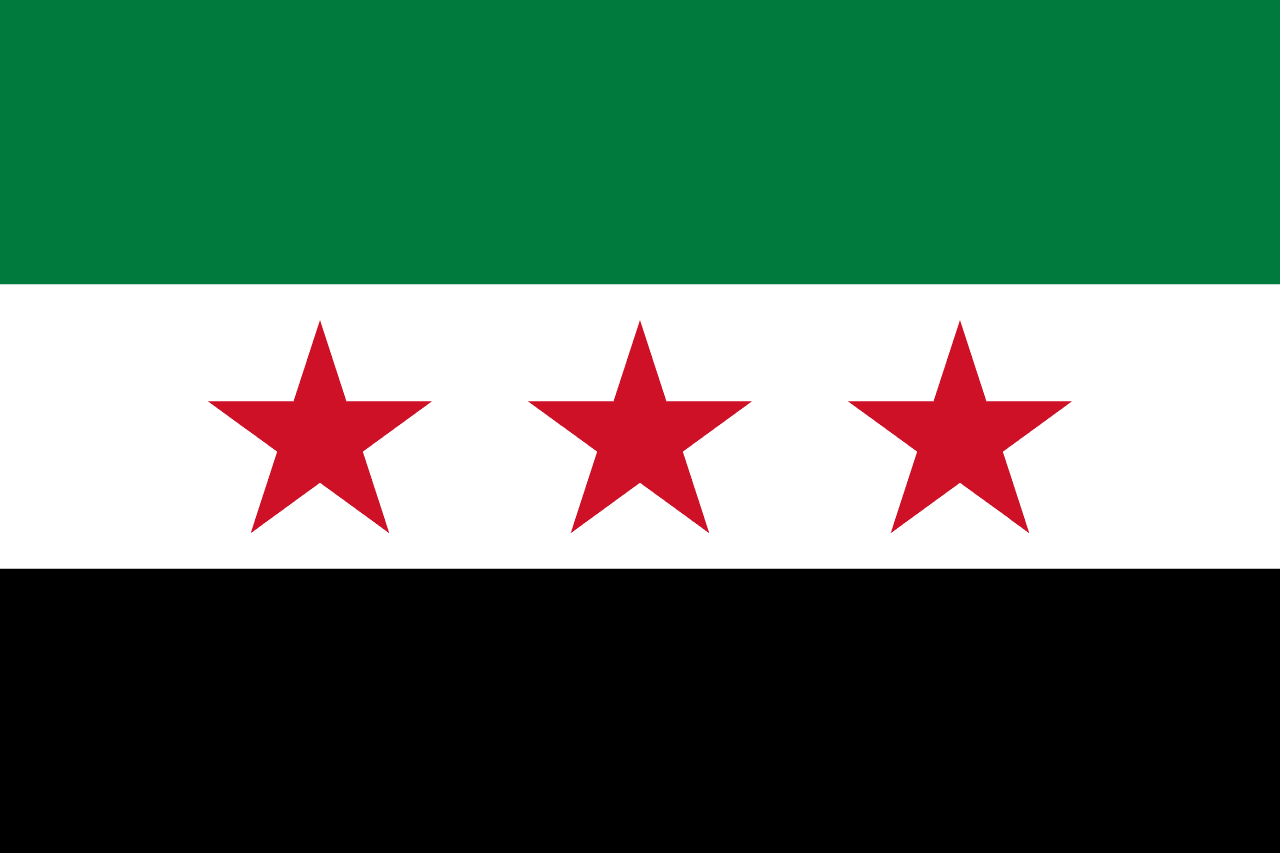
Syria
Asia
Three horizontal stripes of red, white, and black with two green five-pointed stars on the white stripe, representing the Pan-Arab colors of liberation struggles, the Hashemite flag heritage, and the Ba'ath Party's Arab socialist ideology that has governed Syria since 1963.
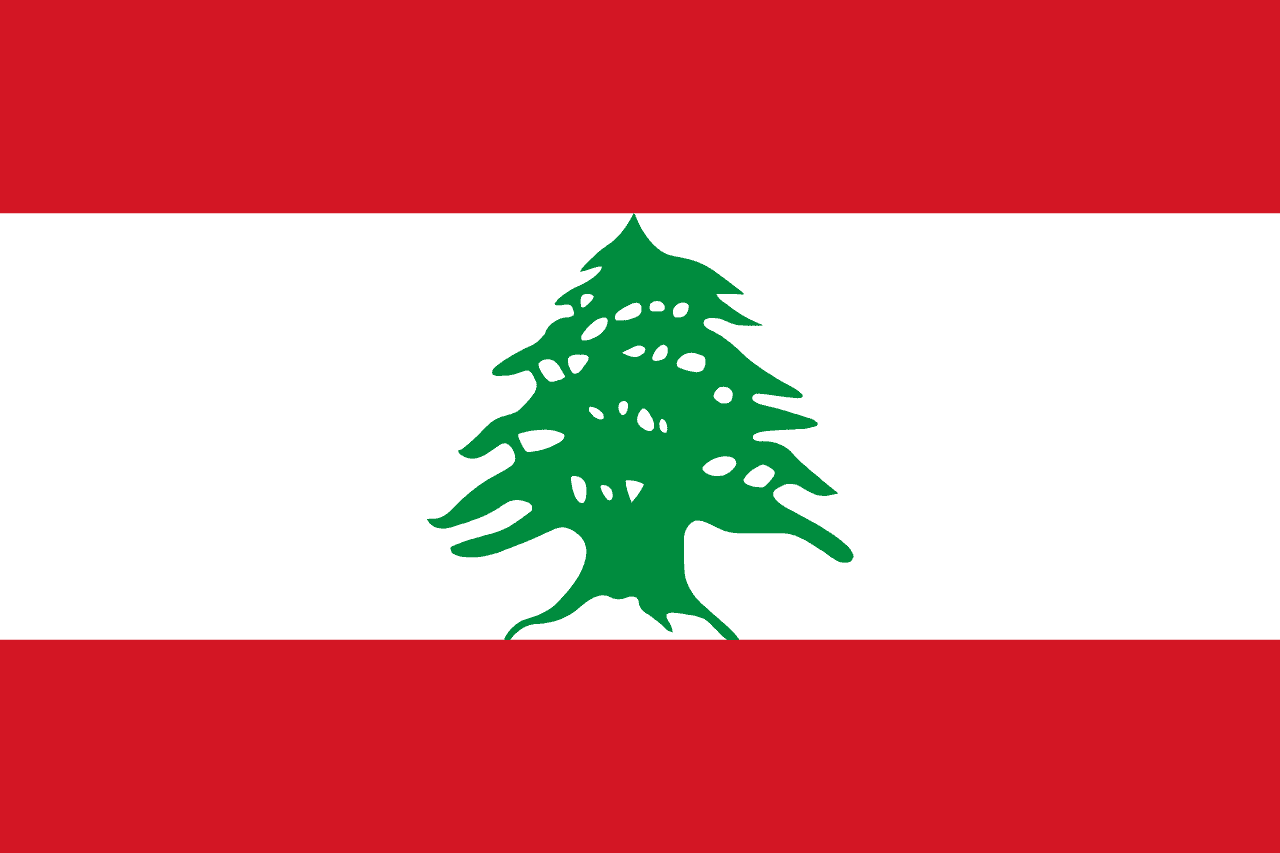
Lebanon
Asia
Two horizontal red stripes separated by a white stripe twice their width, with a green cedar tree centered on the white stripe, representing the strength, purity, and eternal heritage of the 'Land of the Cedars.'
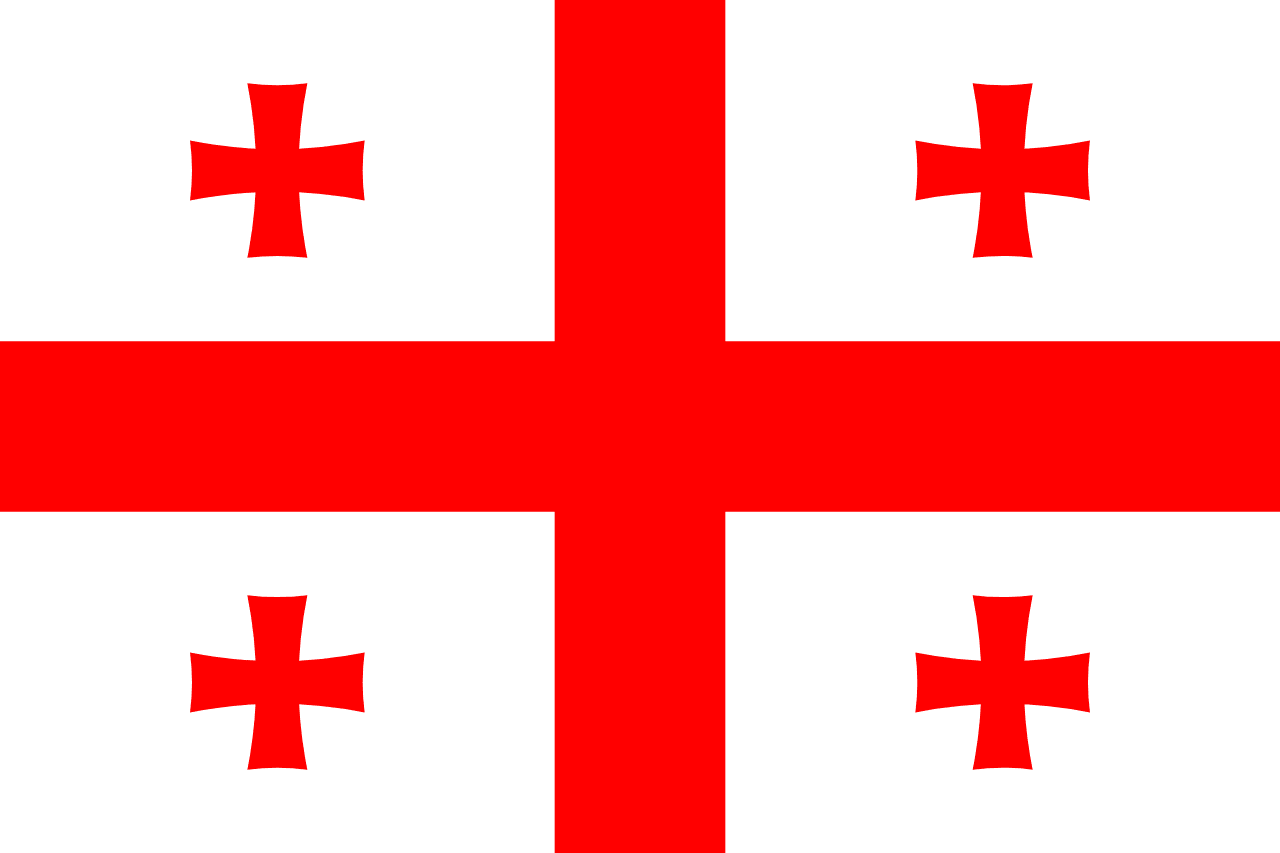
Georgia
Asia
A white field with a large red Saint George's cross extending to the edges and four smaller red Bolnisi crosses in each quadrant, representing Georgia's ancient Christian heritage and the five wounds of Christ.
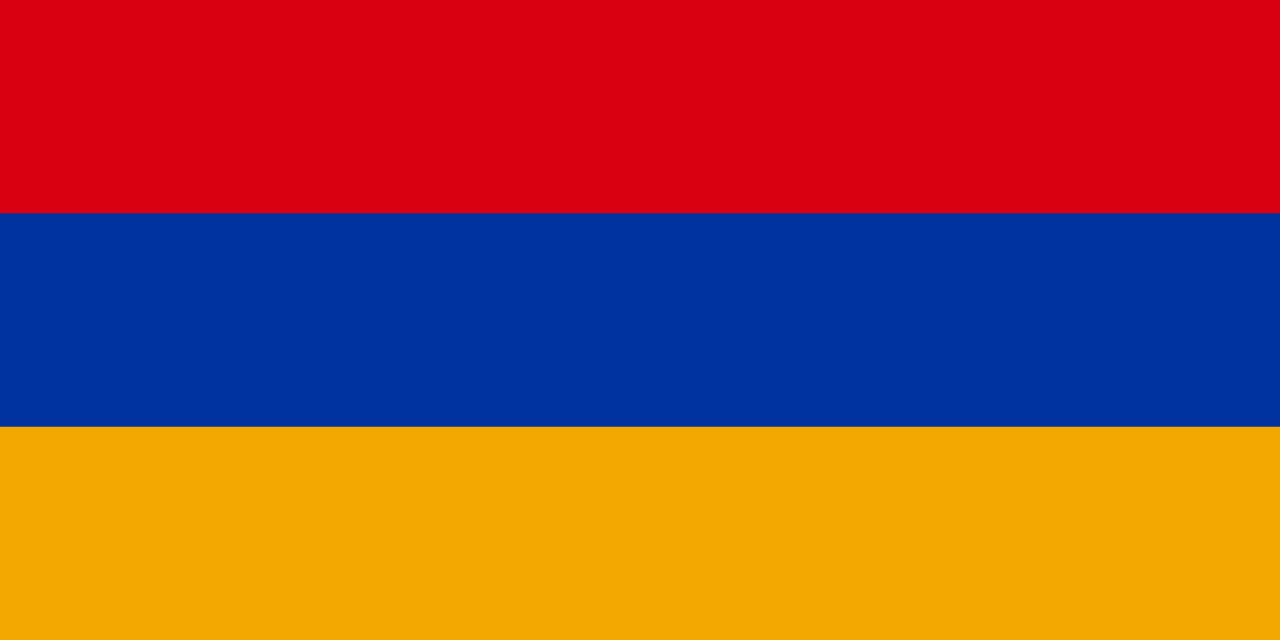
Armenia
Asia
Three horizontal stripes of red, blue, and orange (apricot), representing the blood shed for independence, the Armenian sky and hope for peace, and the fertile land and hardworking nature of the Armenian people, based on the flag of the First Republic of Armenia (1918-1920).
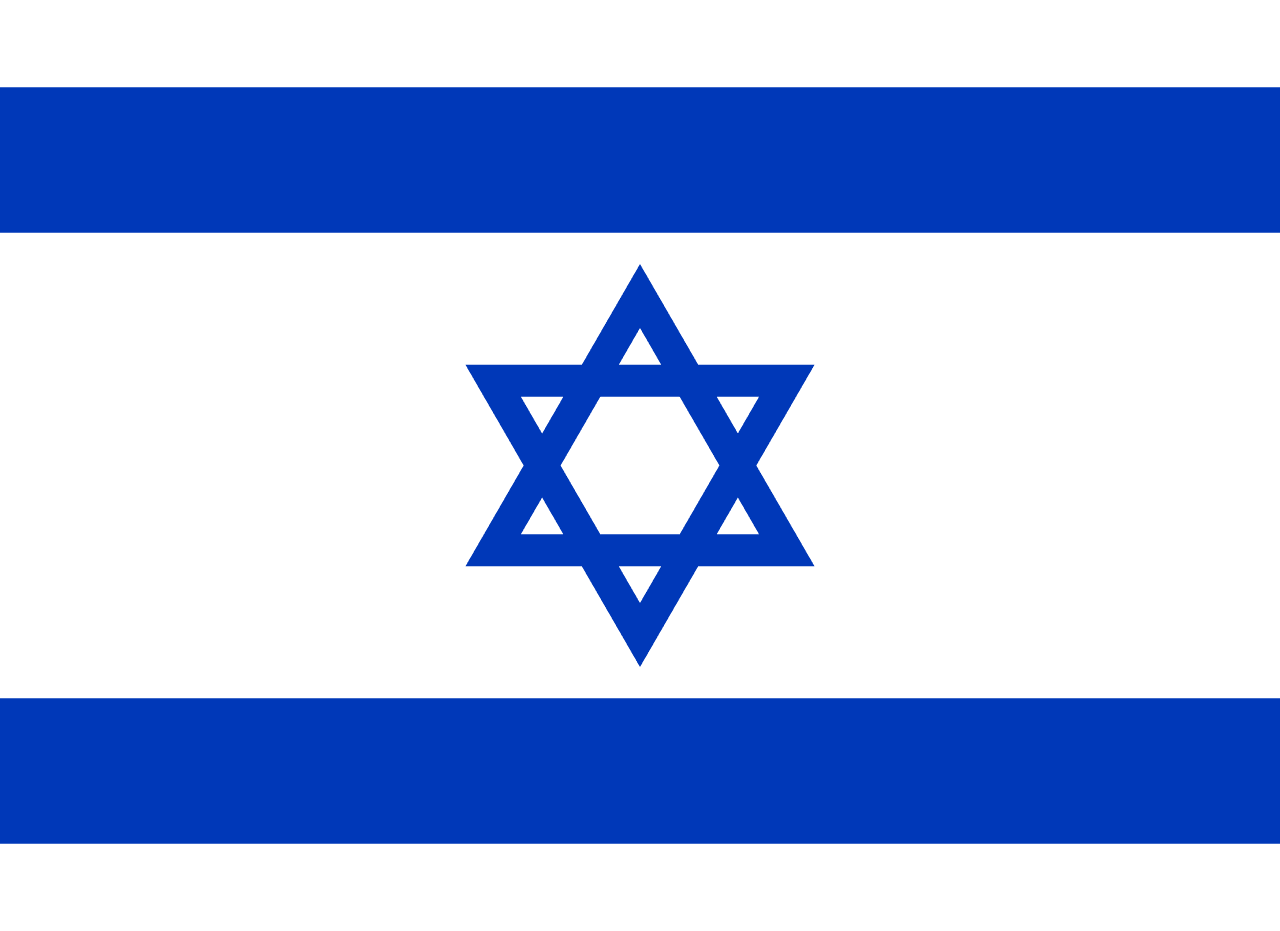
Israel
Asia
A white field with two horizontal blue stripes near the top and bottom edges and a blue Star of David (Magen David) in the center, based on the design of the traditional Jewish prayer shawl (tallit) and representing Jewish heritage and the modern State of Israel.